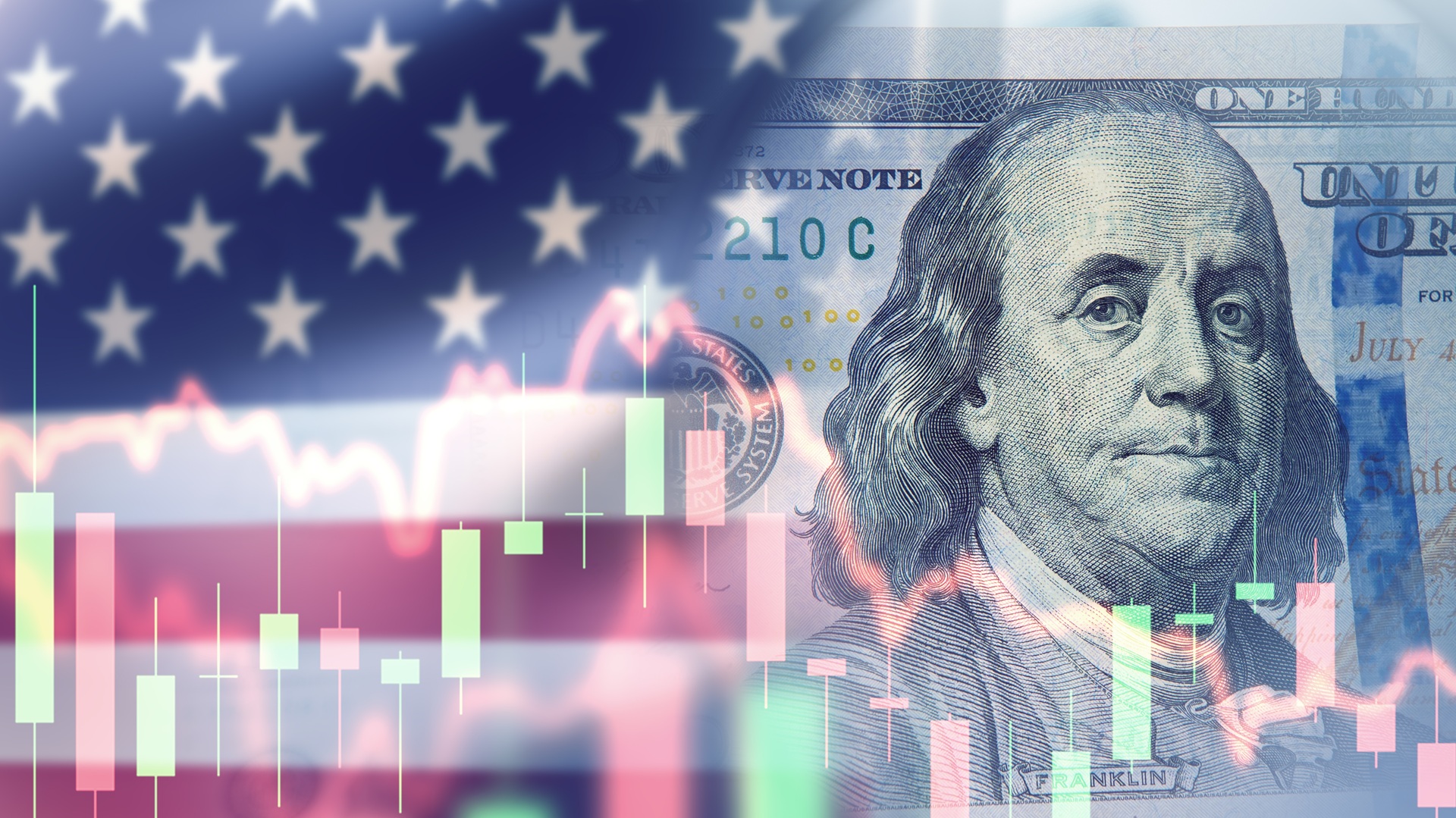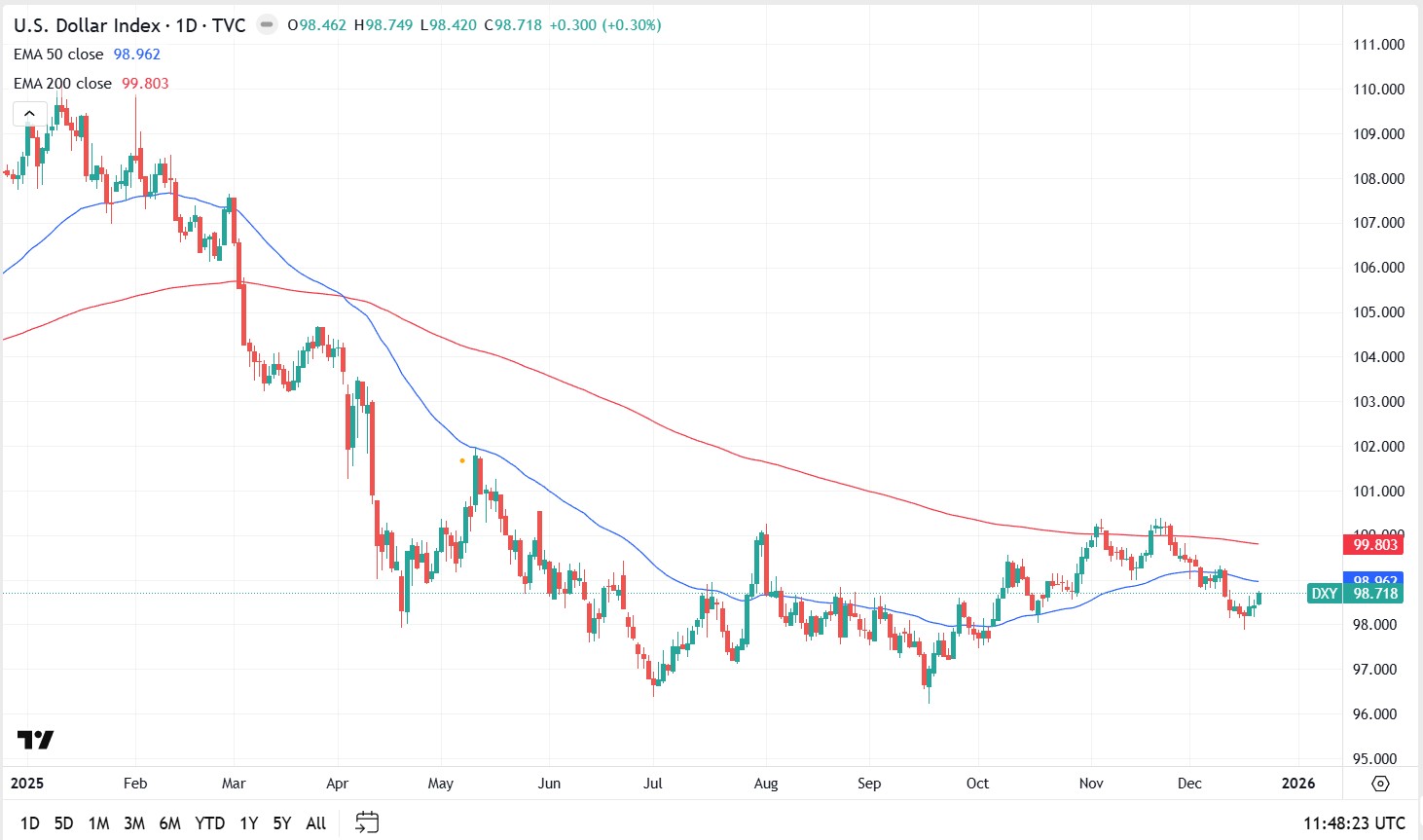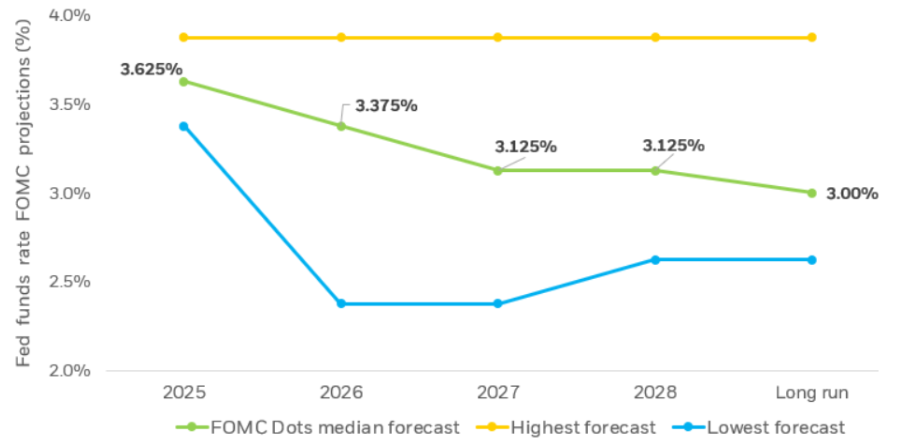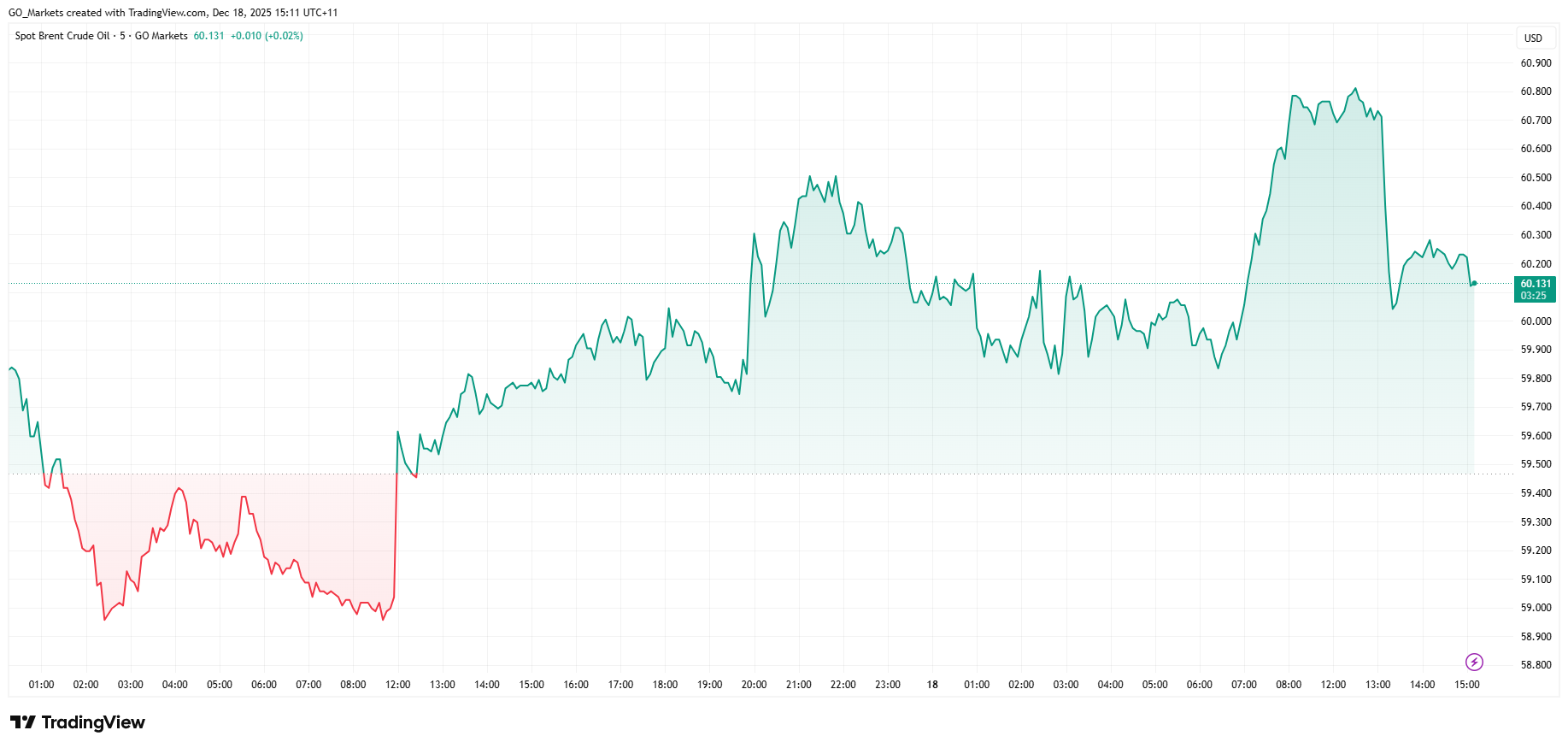
By
GO Markets
本文由 GO Markets 的分析師及撰稿人撰寫,內容基於其獨立分析或個人經驗。文中所表達的觀點、意見或交易風格均屬作者個人,並不代表或反映 GO Markets 的立場。任何提供的建議均屬一般性,並未考慮您的個人目標、財務狀況或需求。在採取任何行動之前,請考慮該建議是否適合您的目標、財務狀況與需求。若該建議涉及購買特定金融產品,請於作出任何決定前,先閱讀我們網站上提供的《產品揭露聲明書》(Disclosure Statement, DS)及其他法律文件。


In 2025, the ASX 200 closed around 8,621 points and was up approximately 6% year to date (YTD) as of 19 December close. Market direction was most sensitive to Reserve Bank of Australia (RBA) expectations, commodity prices and China-linked demand, and (to a lesser extent) moves in the Australian dollar (AUD). The index recovered from November’s pullback, but remained below October’s record close.
Key 2025 drivers included:
The ASX 200 was roughly 5% below its late-October record high close of 9,094 points. After the November retracement, support around 8,400 appeared to hold and buying interest improved. The 50-day EMA near 8,730 (a prior consolidation area) was a commonly watched near-term reference, noting technical indicators can be unreliable.

In 2025, the Nikkei 225 traded around 39,200 points and was up approximately 21% year to date (YTD). Market direction was most sensitive to moves in the Japanese yen (JPY) and Bank of Japan (BOJ) communication, with the index consolidating after multi-decade highs. While broader signals remained constructive, consolidation can resolve either higher or lower.
Key influences included:
After pushing to multi-decade highs earlier in the year, the Nikkei spent time consolidating but has remained structurally strong. Price sits above key long-term moving averages, and some technicians watch the 50-day exponential moving average (EMA) as a potential reference level (noting these indicators can be unreliable). Currency swings and shifting BOJ expectations were commonly cited as contributors to much of the second-half volatility, although pullbacks were generally met with buying interest.


The biggest move in 80 years We need to start with what is probably the biggest structural change Europe has seen since the formation of the European Union to its biggest member – Germany. For the first time in 80 years Germany’s Bundestag has voted to lift the country's “debt brake” to allow the expansion of major defence and infrastructure spending under new leadership of incoming Chancellor Frederick Merz. We need to illustrate how much spending Germany is going to do in defence it is up to €1 trillion over the forward estimates. 5 billion of which is to support Ukraine for this year and to continue to put European pressure on Russia.
It's also a country it has been highly sceptical of stimulating itself having suffered through the Weimar government of the 1920s and 30s that led to hideous hyperinflation and drove the country to political extremism. It is also clearly in response to Washington’s change of tact regarding Europe and the war in Ukraine. As it is now clear that Europe who need to defend itself and that NATO is becoming a dead weight that can no longer be relied upon.
Couple this with what the EU is doing itself. Last week we saw the head of the EU Ursula von der Leyen, delivered a speech that stated the continent needed to: “rearm and develop the capabilities to have credible deterrence.” This came off the back of the EU endorsing a commission plan aimed at mobilising up to €800 billion in investments specifically around infrastructure and in turn defence. The plan also proposes to ease the blocs fiscal rules to allow states to spend much more on defence.
If you want to see direct market reactions to this change in the continent’s commitments – look no further than the performance of the CAC40 and DAX30. Both are outperforming in 2025 and considering how far back they are coming compared to their US counterparts over the past 5 years – the switch trade may only be just beginning. What is also interesting it’s the limited reactions in debt markets.
The 10-year Bund finished marginally higher, though overall European bond markets saw limited movement. Bonds rallied slightly following confirmation of the German stimulus package. Inflation swap rates were little changed, while EUR swaps dipped, particularly in the belly of the curve.
EUR/USD ticked up 0.2% to $1.0960. Hopes for a potential Russia-Ukraine cease-fire also offered some support to the euro but has eased to start the weeks as Russia looks to break the deal before it even begins. Staying with currency impactors – The US saw a range of second-tier U.S. economic data releases last week all came in stronger than expected.
Housing starts jumped, likely benefiting from improved February weather. Industrial production rose 0.7% month-over-month big beat considering consensus was for a 0.2% gain while manufacturing jumped 0.9%. Import and export prices also exceeded forecasts, prompting a slight upward revision to core PCE inflation estimates, mainly due to higher-than-expected foreign airfares.
These upside surprises led to a brief sell-off in treasury bills but yields soon drifted lower as equities struggled. Looking ahead to the FOMC decision, expectations remain for the Fed to hold steady. Chair Powell has emphasised that the U.S. economy is in a "good place" despite ongoing uncertainties and has signalled there’s no rush to cut rates.
The Fed’s updated projections are expected to show a slight downward revision to growth, a more cautious view on GDP risks, and slightly higher inflation forecasts. As for rate cuts, the median expectation remains two 25bps cuts in 2025 and another two in 2026, with markets currently pricing around 56bps of easing next year. All this saw the U.S. dollar trade mixed against G10 currencies as local factors took centre stage.
Despite a weaker risk tone in equities, the DXY USD Index edged down 0.1%. The Aussie and Kiwi dollars softened (AUD/USD -0.3%, NZD/USD -0.4%) as risk sentiment deteriorated. The AUD will be interesting this week as we look to the budget that was never meant to happen on Tuesday.
Considering that we are within 10 weeks of a certain election, the budget really is not worth the paper its written on as it will likely change with an ‘election’ likely to be enacted straight after the new government is sworn in. That said, the budget is likely to show once again that Canberra is messing at the edges and not taking the steps needed to address structural issues. The AUD is likely to fluctuate on the release and then find a direction (more likely to the downside) over the week as the budget shows the soft set of numbers with little or no change in the interim.
Finally, the rally of the yen appears to be over as it continues to weaken. USD/JPY climbed from Y149.20 in early Tokyo trade to around Y149.90 as the London session got underway. With CFTC data showing significant long yen positioning, some traders likely unwound short USD/JPY bets ahead of the BoJ decision.
Other JPY pairs moved in tandem with USD/JPY. But whatever is at play out of Japan – the rally of the past 6-7 months looks to be ending and with USD/JPY facing the magic Y150 mark – will the BoJ step in like it did last year? Will the market look straight past it again?
Or will we see a completely different trend?

With core CPI missing expectations and some slight deceleration in other areas such as retail sales an overall service economic activity. The RBA is likely to hold tight and not raise rates on Tuesday. We say this with some confidence, based on the communication coming from RBA governor Bullock.
She had emphasised the importance of the second quarter CPI print at the June meeting, despite providing hawkish rhetoric around the risk of rate rises and a stalling inflation story. This had led the market and many economists to suggest the possibility of a rate rise has now reduced to sub 10% coming into Tuesday's meeting. That clearly means that it's not still a possibility but all things being equal the likelihood now is negligible.
You can see that here in the charts of the Aussie dollar particularly against the JPY and the USD AUDUSD AUDJPY Given the preference for rate stability by the board, what's also interesting about the Q2 CPI figures is that it gives them a clear path to keep rate stability (their words) for the stable future. It suggests not only will August be a hold but suggests that the September meeting as well would likely be the same. However it can't be ignored that CPI was slightly ahead of forecast and thus the Statement of Monetary Policy (SoMP) coming up in a few weeks will be very interesting.
Because we expect forecast changes and are likely to show a slower progress towards target. So first and foremost, forecasts have to narrow to include the higher than expected year on year figure. The forecast for inflation at the May SoMP update didn't include the new Federal government’s $300 energy rebate or the Western Australian and Queensland governments respective energy rebate.
This will significantly lower the financial year 24 inflation rate but will simultaneously raise the financial year 25 forecast by a similar amount. Providing a bit of a catch 22 from the board. There's been upward revisions in consumer spending and are likely to challenge the forecast assumptions used in the May statement of monetary policy that was justifying a lower part of inflation.
All things therefore being considered the hawkish message coming from governor Bullock is likely to persist. Because as this chart shows core inflation and headline inflation in Australia is the highest against all major peers and despite the RBA having a 2 to 3% target band higher than its peers around 2% it is a long long way away from reaching its goal. It should therefore be pointed out that come the Tuesday decision making call “all options” as the RBA like to call it, realistically means a tight hold or a possible rate hike With the right hike being dismissed.
This means that there is a divergence going on between the RBA and the rest of the dovish global environment. You only have to look at what the Bank of England said last week to understand that something like AUDGBP has a neutral central bank with the hawkish bias dovish central bank with dovish action to see the pair likely moving slightly higher in the interim. The same argument could actually be made for the AUDUSD because post the CPI number as we explained last week The US Federal Reserve was due to meet.
And although the board didn't move the Federal Funds rate At the July meeting it is all but confirmed September is the likely start point for the Fed’s right cutting cycle. The US has seen some pretty mixed data over the last six days. Unemployment has ticked up; retail sales ticked down; inflation has moderated and forward looking indicators in consumer confidence and industrial manufacturing have both declined.
Couple this with the US election geopolitical risks and other factors explains the rally that has happened in the pair post the CPI data as seen here: AUDUSD Returning to the outlook for the US and the federal funds rate post the FOMC July meeting. 7 major economists are forecasting not just the September meeting with a rate cut but the remaining three meetings of the year will see cuts from Constitutional Ave. And if we take into consideration the FOMC’s dot plots the cuts will continue early into 2025 most likely at the February, March and May meetings. If this doesn't indeed come to fruition the impact on US indices will clearly be to the upside.
FX is likely to have to ask some serious questions around pricing in pairs such as the EUR, GBP and CAD. Which brings us back to the Aussie dollar The current sell off that we've seen in the currency is based solely on the idea the RBA is on a tight hold, and that selling is probably justified. However with the data that is currently before us it is hard to make a case that isn't bullish for the AUD as it gets left behind in the rate cut environment and dovish outlook the global economy is about to undertake.
Thus post Tuesdays meeting Michele Bullock's press conference will be key to this trade idea because it's likely to show you like she did in June that is going to have to continue on with the hawkish view and jawbone inflation lower.

In 2025, the ASX 200 closed around 8,621 points and was up approximately 6% year to date (YTD) as of 19 December close. Market direction was most sensitive to Reserve Bank of Australia (RBA) expectations, commodity prices and China-linked demand, and (to a lesser extent) moves in the Australian dollar (AUD). The index recovered from November’s pullback, but remained below October’s record close.
Key 2025 drivers included:
The ASX 200 was roughly 5% below its late-October record high close of 9,094 points. After the November retracement, support around 8,400 appeared to hold and buying interest improved. The 50-day EMA near 8,730 (a prior consolidation area) was a commonly watched near-term reference, noting technical indicators can be unreliable.

In 2025, the Nikkei 225 traded around 39,200 points and was up approximately 21% year to date (YTD). Market direction was most sensitive to moves in the Japanese yen (JPY) and Bank of Japan (BOJ) communication, with the index consolidating after multi-decade highs. While broader signals remained constructive, consolidation can resolve either higher or lower.
Key influences included:
After pushing to multi-decade highs earlier in the year, the Nikkei spent time consolidating but has remained structurally strong. Price sits above key long-term moving averages, and some technicians watch the 50-day exponential moving average (EMA) as a potential reference level (noting these indicators can be unreliable). Currency swings and shifting BOJ expectations were commonly cited as contributors to much of the second-half volatility, although pullbacks were generally met with buying interest.


2025 has seen a material decline in the fortunes of the greenback. A technical structure breakdown early in the year was followed by a breach of the 200-day moving average (MA) at the end of Q1. The index then entered correction territory, printing a three-year low at the end of Q2.
Since then, we have seen attempts to build a technical base, including a re-test of the end-of-June lows in mid-September. However, buying pressure has not been strong enough to push price back above the technically critical and psychologically important 100 level.
As things stand, the index remains more than 10% lower for 2025. On this technical view, the index may revisit the 96 area. However, technical levels can fail and outcomes depend on multiple factors.
US dollar index

The key question remains: are we likely to see further losses in the early part of next year and beyond, or will current support hold?
We cannot assess the US dollar in isolation and any outlook is shaped by internal and global factors, not least its relative strength versus other major currencies. Many of these drivers are interrelated, but four potential headwinds stand out for any US dollar recovery. Collectively, they may keep downside pressure in play.
One scenario where US dollar support has historically been evident is during major global events, slowdowns and market shocks. However, the more muted response of the US dollar during risk-off episodes this year suggests a shift away from the historical norm, with fewer sustained US dollar rallies.
Instead, throughout 2025, some investors appeared to favour gold, and at other times, FX and even equities, rather than into the US dollar. If this change in behaviour persists through 2026, it could make recovery harder, even if global economic pressure builds over the year ahead.
Trade policy is harder to measure objectively, and outcomes can be difficult to predict. That said, trade battles driven by tariffs on US imports are often viewed as an additional potential drag on the US dollar.
The impact may be twofold if additional strain is placed on the US economy through:
The Fed formally halted its balance sheet reduction, quantitative tightening (QT), as of 1 December 2025, ending a program that shrank assets by roughly US$2.4 trillion since mid-2022.
Traditionally, ending QT is seen as marginally negative for the US dollar because it stops the withdrawal of liquidity, can ease global funding conditions, and may reduce the scarcity that can support dollar demand. Put simply, more dollars in the system can soften the currency’s support at the margin, although outcomes have varied historically and often depend on broader financial conditions.
Interest rate differential (IRD) is likely to be a primary driver of US dollar strength, or otherwise, in the months ahead. The latest FOMC meeting delivered the expected 0.25% cut, with attention on guidance for what may come next.
Even after a softer-than-expected CPI print, markets have been reluctant to price aggressive near-term easing. At the time of writing, less than a 20% chance of a January cut is priced in, and it may be March before we see the next move.
The Fed is balancing sticky inflation against a jobs market under pressure, with the headline rate back at levels last seen in 2012. The practical takeaway is that a more accommodative stance may add to downward pressure on the US dollar.
Current expectations imply around two rate cuts through 2026, with the potential for further easing beyond that, broadly consistent with the median projections shown in the chart below. These are forecasts rather than guarantees, and they can shift as economic data and policy guidance evolve.


Donald Trump has officially declared the Maduro regime in Venezuela a foreign terrorist organisation and ordered a "total and complete blockade" of the country's sanctioned oil tankers.
The U.S. has positioned 11 warships in the Caribbean to enforce the blockade, which could remove 400,000 to 500,000 barrels daily from global supply.
The move sent crude prices jumping over 2% and sparked renewed concerns about supply stability heading into 2026.

White House Chief of Staff Susie Wiles succinctly summarised the situation as: “Trump wants to keep on blowing boats up until Maduro cries uncle."
Brent crude jumped 2.4% to $60.33 per barrel, while WTI climbed 2.6% to $56.69.
If crude maintains its $60 per barrel price, analysts project the blockade, combined with potential Russian sanctions, could push prices toward $70 as Venezuela's already-devastated economy faces collapse.
The Bank of Japan is set to raise interest rates to their highest level in three decades this Friday, with Governor Kazuo Ueda expected to lift the benchmark rate from 0.5% to 0.75%.
While modest by global standards, this marks a landmark step in Japan's departure from decades of near-zero rates and unconventional easing.
The decision comes amid significant market turbulence. Japanese government bond yields have surged, with 30-year bonds hitting record highs and 10-year yields reaching 19-year peaks.
The volatility stems partly from concerns under new Prime Minister Sanae Takaichi, who recently approved a $118 billion stimulus package with over 60% financed through borrowing.

While Friday's hike appears certain, policymakers have signalled caution as they push rates toward levels estimated between 1% and 2.5%.
Ueda's post-meeting press conference will be closely watched for signals about future increases.
Micron Technology is projecting second-quarter earnings of $8.42 per share, nearly double Wall Street's $4.78 estimate.
Micron shares surged 7% in after-hours trading as markets reacted to the news that the AI-driven memory chip race is showing no signs of slowing.

As one of only three major suppliers of high-bandwidth memory (HBM) chips alongside SK Hynix and Samsung, Micron sits at a chokepoint in AI infrastructure.
The HBM specialised chips are essential for training and deploying generative AI models, and current demand is dramatically outpacing supply.
CEO Sanjay Mehrotra revealed that supply tightness will extend beyond 2026, with Micron expecting to fulfil only 50-70% of key customer demand in the medium term.
Micron projects revenue of $18.70 billion this quarter versus analyst estimates of $14.20 billion. The company has retooled their operations toward AI applications, even dissolving its consumer "Crucial" brand to concentrate on AI data centre demand.
HBM chips are now the bottleneck in AI system performance, and suppliers who can deliver at scale have the potential to capture large amounts of value over the coming years.